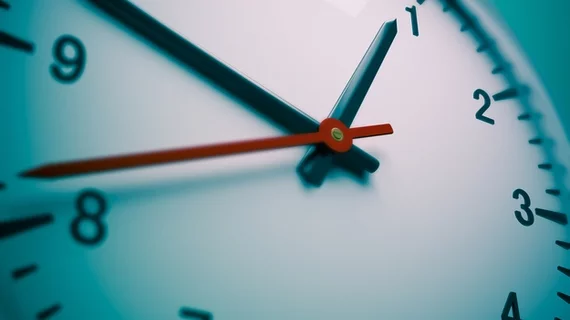Time-of-day CT demand data provide low-cost method to improve radiology resource planning, quality
Analyzing CT demand during different time intervals throughout the day can provide radiology departments with a low-cost tool to improve quality and resource planning, experts charged in a new study.
Pulmonary embolism diagnoses have surged substantially in recent decades, straining hospital imaging departments tasked with spotting this concern. The uptick has underlined the need to improve CT pulmonary angiography workflows, with a fast diagnostic workup necessary to avoid poor outcomes or death, researchers wrote May 8 in the European Journal of Radiology.
Analyzing CTPA use from three different times of day at a single hospital—covering roughly the morning, afternoon and evening—German radiology researchers found some important clues.
“Requests during night hours were generally handled quicker than during daytime, even in fatal cases,” Daniel Koehler, with the department of radiology at the University Medical Center Hamburg-Eppendorf, and co-authors wrote May 8. “Time series analysis of routinely created time data can reveal such coherences. It may be a potential tool in the fields of resource planning and quality control in radiology departments without the need for large investments,” they added.
To reach their conclusions, Koehler et al. analyzed time data, covering the span from initial CT scan to completion of the radiology report, from the years 2013 and 2018. Researchers looked for differences between exams performed from 6 a.m. to 2 p.m., or the morning period; 2 p.m. to 10 p.m., or the afternoon; and 10 p.m. to 6 a.m., or the evening.
Emergency department demand for CTPA was lower in the morning compared to other parts of the day, with requests peaking around 4:23 p.m. Meanwhile, requests for inpatient pulmonary embolism testing often occurred during that early-day period before 2 p.m., reaching a peak at 1:54 p.m.
Time of day also impacted the duration of the diagnostic process, Koehler et al. noted. For instance, the time from request to a CTPA scan was more than two times longer between 6 a.m. to 10 p.m., possibly because of the ED’s heavy demands during that time.
“Time series of routinely created time data may uncover such delays and show potential for improvement,” the authors advised. “Constant monitoring would offer the possibility to recognize differences quickly, anticipate future changes, and react dynamically,” they added later.

